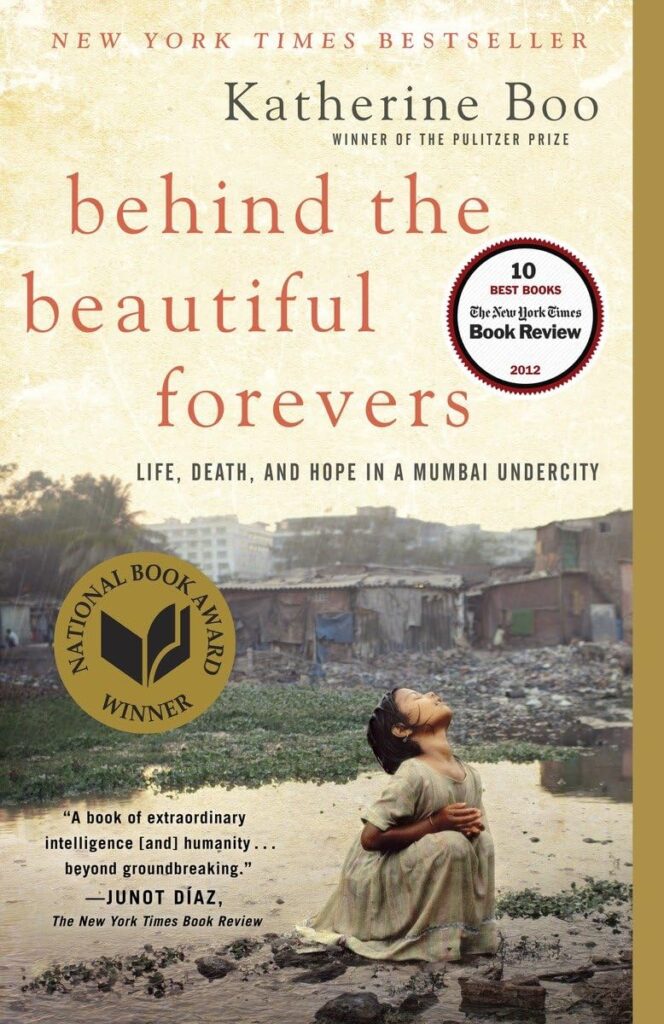A short-and-sweet look at the book Behind the Beautiful Forevers: Life, Death, and Hope in a Mumbai Undercity, by Katherine Boo.
Half biography, half investigative reporting, Behind the Beautiful Forevers follows the lives of Mumbai trash pickers, a female slum lord, and their families. If you seek to better your understanding of worldwide poverty, this book is a good place to start.
The undercity, or slum, of Mumbai is a place where, according to the author, the residents who eat the frogs and rats from the edge of the sewage drain give an “inestimable contribution” to their neighbors who haven’t yet fallen into such dire straits: “a felt sense of their own upward mobility.” (quoting from Chapter 1)
Part of Mumbai thrives with riches gained from India’s successful leap into the modern economic world. But the people described in the slum of Annawadi live on the wrong side of a wall advertising a product that is “beautiful forever,” and the world of beauty seems almost beyond their reach. They can see the glass and steel of the airport luxury hotels. They earn a living by recycling the trash thrown away by the patrons of the hotels. The idea of staying in the hotels themselves, though, seems beyond reach.
The Story
The scale of corruption described in this book is staggering. Teenaged trash picker Abdul, the central character of the story, is imprisoned for a crime he didn’t commit. (The woman he supposedly attacked burned herself, as witnesses could attest.) While he is in prison, everyone jumps at the opportunity to attempt to siphon money from his impoverished family. Policemen, doctors, neighbors, school officials, and others flock like scavengers themselves to the scavenger’s desperation. Throughout the long trial, the reader wonders with Abdul if justice has a chance in such surroundings.
Katherine Boo tells the story she gained through years of patiently following the same people and interviewing them, yet she never inserts herself into the story. She intended to show how the economic ups and downs of the 21st century have affected some of the poorest people in our world. What she also found was that morals are difficult to maintain when one is in an environment as harsh as the slums. How can a desperate person muster the compassion or time to bring a cup of water to a dying man?
My Notes
Beautiful Forevers asks hard questions and provokes deep thought. For instance, reading about the mishandling of money donated to charities makes the reader rethink giving. How ought we to give to those who are in poverty? Should we refrain from giving unless we can personally see where the money goes? Is there a way to find administrators for donated funds who can be trusted?
I listened to the audio version of Behind the Beautiful Forevers. Reader Sunil Malhotra switches effortlessly from narration in an American accent to reading speech in an Indian-accented English.
Warning: Harsh language used by some of the people featured in this narrative.

